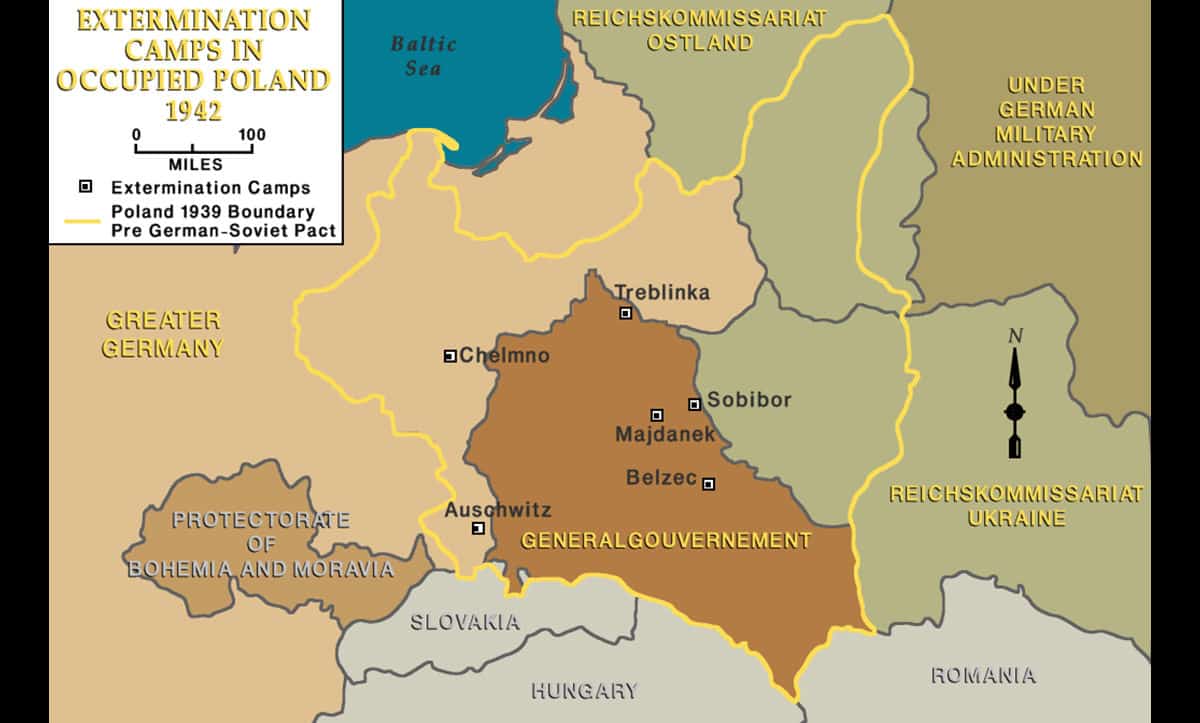From the summer of 1941 onwards, the situation for Jews and others viewed as inferior by the Nazis continued to rapidly deteriorate.
Poland
In Poland, the invasion of the Soviet Union meant that many of those incarcerated in ghettos were put to work manufacturing a variety of items for the war effort. However, as soon as it became clear that the war would not be over quickly, the fate of the Jews trapped in the ghettos of Poland and eastern Europe was sealed. On 16 January 1942, the first set of deportations departed from the Łódź Ghetto, swiftly followed over the next two weeks by thirteen more transports, totalling 10,103 Jews. Almost all of them, except the 50-60 Jews who formed the Sonderkommado, were gassed shortly after arrival.
Four days after the first transport left Łódź, the Wannsee Conference took place, leading to the establishment of five more extermination camps.
Genocide
was unleashed as ghettos across Poland were emptied and Jews were sent to the extermination camps. In Warsaw, between July and September 1942, approximately 300,000 inhabitants of the Warsaw Ghetto were deported to
Treblinka
and murdered.
The Soviet Union
Following the
Einsatzgruppen
‘s initial advance into the Soviet Union and the resulting widespread massacres, many of the Jews who had been initially spared were forced into ghettos and used as slave labour. Those incapable of carrying out hard labour were murdered.
As Germany’s military advances slowed, the ruthlessness of the actions against the Jews and others seen as racial enemies of the Nazis radically increased. An example of this ruthlessness can be seen in the city of Kauna, Lithuania, where, on 4 October 1941, 1985 Jews were killed by Einsatzgruppen and local Lithuanian collaborators.
Karl Jäger
, leader of Einsatzkommando 3A, later reported that the massacre was in retaliation for the murder of a German policeman in the ghetto. Just under four weeks later, on 29 October 1941, a further 9,200 Jews were murdered in the city. They were forced to strip naked, with their belongings and valuables taken away, pushed into large pre-prepared mass graves, and then shot with machine guns. This time, Jäger reported that those murdered were
surplus
to requirements.
The murders in Kauna show the escalation of the Einsatzgruppen’s actions in the Soviet Union in late 1941, which continued to intensify and spiral out of control as war efforts struggled throughout the following years. By 1945, centuries of Jewish culture had been destroyed and thousands upon thousands of Jewish communities had been
decimated
.
































![[From left to right] Sonja, Adolf and Lotte Jaslowitz, a Jewish family from Czernowitz, a city in north Romania. On 4 June 1942, having survived the first Einsatzgruppen sweep through the city, the family were deported to Ladijin Concentration Camp. Throughout the next three years, the family endured horrific and unsanitary conditions in several ghettos and camps. Only Lotte survived the war.](https://dsvfmvr182ibt.cloudfront.net/prod/uploads/2019/11/WL9746_1200x723_acf_cropped.jpg)











